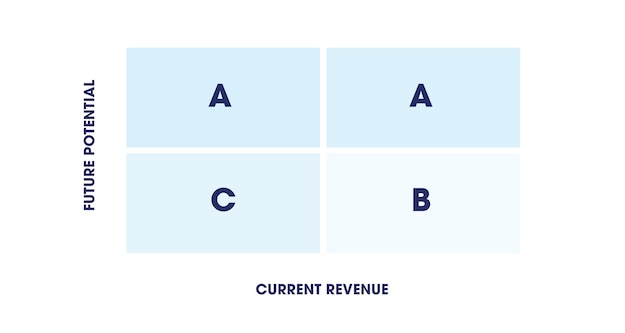“Our selling motions may never be the same.”
“Competitive intensity is only going to increase … we could fall behind.”
“We will have to do more with less given hiring and spending freezes.”
Those are among a handful of common concerns we hear from sales leaders these days — many of whom are responsible for promoting efficient growth, even as we face economic uncertainty.
Sales leaders will need to zero in on where they and their teams can increase efficiency, manage risk, and most importantly, drive revenue. They will need to relentlessly prioritise, deploy effective tools for sellers, and train their sales reps on new skills required in the current selling environment.
The following are a few strategies our customers use to meet the challenge:
1. Promote efficient growth by focusing on high-potential and high-revenue accounts
Sales is all about telling the right person the right story at the right time. In a “do more with less” environment, sales teams must focus on the best markets, accounts, and decision makers to pursue.
This prioritisation requires an intelligent approach that relies on data. Some customers leveraged predictive insights to determine which deals might get pushed into the next quarter. They then developed recovery plans to speed up deal closures and capture millions of dollars in revenue in the current quarter.
Here’s how it works:
- Regrade and rescore your accounts based on current revenue and future potential. Plot each of your accounts on a 2×2 matrix from low to high, with future potential on the vertical axis and current revenue on the horizontal axis.

- Determine your highest-priority accounts. From the matrix above, your main focus should be on the top two quadrants: customers with high future potential and high revenue. For each of those quadrants, you want to determine if you have the right sales coverage and resourcing, which might require rolling out new sales or communication channels for easier customer engagement and folding in more reps to handle complex accounts.
- For high-priority accounts, develop strategic account plans to uncover new sales opportunities. The account plan doesn’t need to be lengthy, but should include an executive-level account overview, key sales goals and objectives, top opportunities for the year, and a relationship plan (how you intend to communicate with account stakeholders). From a plan execution standpoint, you should include the account team roles and responsibilities, a meeting cadence, and an overall action plan. At a minimum, sales leaders should review the plan on a monthly and quarterly basis.
- Leverage an integrated tool with automation, AI, and real-time data to track account progress and performance. The tool should include insights across marketing, sales, and service — or at least seamlessly integrate with tools used in these departments. To make it as effective as possible, make sure it automates manual tasks and communications, and offers intelligent insights so sellers can prioritise the best opportunities as soon as they arise. If you already have a CRM, check to see if it has this functionality — some include it as part of the core platform.
2. Simplify your sales tech stack
Our latest State of Sales report revealed something alarming about sales reps: most of them spend only a third of their time selling. The other two-thirds is spent juggling manual tasks like data entry and deal record management in outdated CRMs and countless other, disconnected tools. The solution? Streamlining and optimising tech. Some of our customers have reduced costs by hundreds of millions of dollars by standardising and simplifying their systems.
To do the same for your business, consider taking the following steps:
- Outline each system or tool involved in the sales process.
- Determine how much each tool is used during the sales process as a proxy for value. Generally, unused tools — or tools with a lot of unused features — signal low value.
- Create a plan to sunset systems and tools that add little value to the seller or process.
A tool by itself will not drive results, but seeing a rep in action, powered by their systems, can drive the kinds of impact leaders are looking for.
To commit to long-term and lean productivity, strengthen your sales operations — if you haven’t already. With a keen eye on process efficiency and streamlining technology (leveraging the latest in automation and AI), sales ops teams can make sales predictions more accurately.
(Also, read about how startup Anduin Transactions approached streamlining its sales operations.)
3. Minimise business risk by focusing on customer and employee satisfaction
Without surplus financial resources, risk can increase. You lack the room for error to make a bad acquisition or launch a nice-to-have marketing campaign or product. That surplus is only possible when revenue is stable, and stable revenue is only possible when customers are satisfied and top-performing talent is retained. That’s why you need to make sure both customers and your employees are happy. Here’s how:
For your talent: Survey your sales teams to gauge levels and areas of dissatisfaction. As needed, execute any necessary retention strategies that address these areas of concern. For example, if your reps are frustrated with low pay, consider multi-year bonuses. If sales reps are wondering how to progress in their careers, roll out new professional development opportunities like classes and seminars.
Also, be sure your reps have everything they need to succeed in their day-to-day work by setting up enablement programs with the right onboarding, coaching, training tools, and resources. Studies show that if you give them everything they need to sell more, faster from the get-go, they’re more likely to stay.
For your customers: First and foremost, train your reps to engage customers beyond the sale. Give them ownership over the customer relationship so they track progress both up to the sale and after the deal is completed — ensuring service, billing, and all other team interactions are exceptional. Encourage regular check-in calls or communication, even if the customer doesn’t reach out with an ask. This makes them feel valued, which encourages loyalty and creates lasting relationships.
To get a sense of customers who might be ready to leave for the competition, look at data such as past buying behaviour or service issues. For example, a customer who stops buying as frequently or as much as they once did may be at risk of defecting. They may also be contacting the service centre more and have an increasing number of support cases. Be proactive about addressing these issues — prioritise reaching out to customers whose behaviours have changed or who need some extra help.
Next steps for efficient growth:
Driving efficient growth in times of change is ultimately achieved by returning to the basics. Most importantly, remain focused on the accounts that fuel revenue, cut back on tech that doesn’t serve you, and take care of your customers and employees. Also, be ready to adjust strategies and processes when they aren’t working. If you can achieve this, not only will you perform better during a downturn, but you will set yourself up for efficient growth whenever market conditions fluctuate.

























